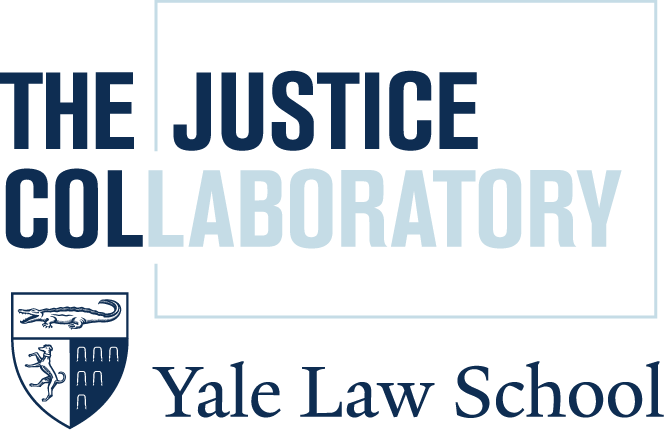The JC Read Out from Law & Society 2025 in Chicago
Several Justice Collaboratory members and researchers joined sociology and legal scholars in Chicago to participate in Law & Society’s Annual Conference. We presented two dynamic panels that highlighted existing work and previewed upcoming publications.
If you missed us in Chicago, here is a recap of our presentations:
The Theory and Practice of Trust & Safety
Four papers explored the theory and practice of trust and safety in both online and real-world settings.
· In New Worlds Arise: Online Trust and Safety, Matt Katsaros discussed the advancements and challenges in the professionalization of the online trust and safety field. He shared research that showed more upstream preventative measures—rather reactive approaches—to content moderation may be more effective in reducing harmful content and building online trust and safety. Read more about this work.
· In The Fear Factor: Understanding Online Discussions of Crime and Safety, Jessica Pardim Arajuo reviewed a study that showed discussions of local crime on Nextdoor as a major driver of negative user experiences and specifically, the comments as the primary source of distress. She offered recommendations for Nextdoor to build a greater sense of trust and safety among users including deescalating toxic comment threads and allowing users to have more control over their experience by opting in or out of crime related discussions. Read more.
· In Moral Injury as a Risk Factor for Posttraumatic Stress Disorder Following Incarceration, Kathryn Thomas presented her current research on moral injury in incarcerated people. A term that refers to perpetrating or witnessing acts of transgression that violate deeply held moral beliefs and expectations, moral injury was originally studied in combat veterans and could hold promise as a point of intervention for PTSD treatment in people with histories of incarceration. Kathryn shared preliminary study results, that revealed high rates of moral injury exposure among incarcerated people.
· In Trust on Trial: Prosecutors’ Perspectives on Legitimacy, Justice, and Gun Violence, Caroline Nobo presented on behalf of Courtney Durdle, who tragically passed away in March while leading this project. Caroline explained the outcomes of the third round of this project that sought to understand how prosecutors view their legitimacy in their daily practices, particularly in cases involving victims of gun violence. Learn more about this work.
Adjudication, Education, Regulation: Legal Frameworks for Justice Transformation
This session explored alternative legal frameworks toward justice transformation. The presentations offered a multidisciplinary approach, employing legal, philosophical, and structural analyses to advance possibilities for creating a just, equitable, and democratic relationship with the state.
· In Adjudication as Civic Education, Tracey Meares and Benjamin Justice previewed a chapter in their upcoming book about how legal adjudication in state and local courts offers Americans a civic education. They drew upon the educational idea of curriculum—that courts produce a formal, overt curriculum reinforcing ideas of rights and democracy and a hidden curriculum that undermines those same lessons. Because of legally and socially structured inequality of experience with courts, these two curricula generate separate feedback loops of civic education—one for those who experience courts largely though the formal curriculum of positive messaging and jury trials, on the one hand, those who experience the daily, degrading experience of courtroom appearances and non-jury adjudication on the other. Their book is due out by the end of 2025.
· In Policing's Regulatory Future, Jorge Camacho proposed a solution to anchoring policing at the intersection of legality, effectiveness, and harm-minimization through a new legal-political framework of regulatory constraint. Through the creation of a robust regulatory infrastructure capable of overseeing operational standards for both police officers and police departments, he explained how regulatory constraint offers the most assured means for exporting high-quality policing practices across policing's vast footprint and has the potential to improve policing's legitimacy among its heterogenous constituency by placing the regulatory reins in the hands of a pluralistic governing body. This includes representatives of community interests that have largely been excluded from current efforts at policing governance. He argued that such control would enable communities to implement policing in a way that serves, rather than subverts, their public safety vision.
· In The Black Panther Party’s Structural Vision of Crime, Victimization, and Justice, Miriam Gohara previewed her upcoming book that examines the origins of the American dominant victims' rights legal framework and alternative visions for justice. She shared images of The Black Panther Party newspapers during the height of their publication from 1967 to 1976 to show how the Party defined state violence, poverty, and the vestiges of enslavement as crime. The Party identified victims as people who suffered the consequences of those crimes, including people in prison, which is why the Party's visions of justice were directed at protecting people from state violence and meeting their basic human needs. The Black Panther Party's vision of social investment as an antidote to crime, which the Party enacted through its programs, remains a powerful model for universal public safety.




